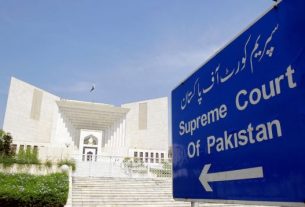Srinagar: Six years ago, 60-year-old Anantnag farmer Hilal Ahmad converted his paddy field into an apple orchard after incurring huge losses. What seemed a tough decision at that time has turned into a blessing for him now.
“My land is the only source of earning livelihood so it was a very tough call to make. However, I started growing high-density, high-yielding, foreign-variety apple trees. Gradually, the results poured in and his income has increased,” he said.
Similarly, Abdul Hamid, a 50-year-old farmer from Hama village in Anantnag district, used to generate profits of Rs 20,000 from the paddy he grew on his 10-Kanal of land. “A flip in the ideas and his change to growing apples on the same land now fetches us a profit of three lakh rupees annually. We have a family of six people and all are dependent on the apple orchard,” he said.
Kashmir is witnessing a change in the landscape of agricultural fields. The sprawling paddy fields are now being replaced by neat rows of apple trees. Experts believe the change is driven by economic considerations as the horticulture sector gives “5-6 times (500-600%)” monetary benefits to farmers than paddy cultivation.
According to the figures of the Department of Horticulture Jammu and Kashmir accessed by The Kashmir Monitor, the horticulture sector has increased by over 400 percent in the valley since 1974.
Figures reveal that in 1974-75, the area under horticulture cultivation was 82,486 hectares in the UT. It increased to 2,19,039 hectares in 2001. In 2020, the area under horticulture jumped to 3,30,956 hectares. While the land under paddy cultivation has shrunk from 163,000 hectares in 1996 to 134,067 hectares in 2021. This indicates a loss of 28,933 hectares under paddy cultivation in the last 25 years.
Dr. Abdul Rauf Malik, Assistant Professor Department of Fruit Sciences Sheri-Kashmir University of Agricultural Sciences and Technology, Kashmir (SKAUST-K) said the apple is the largest horticulture crop grown in J&K.
“The main motivator that drives farmers to apple cultivation over paddy cultivation is the monetary benefits. Also, the former is a dynamic sector. The technological advancement in the horticulture sector has led to more productivity, thereby, increasing the income of farmers. Whereas, paddy cultivation doesn’t give too many economic benefits,” Dr. Rauf said.
Senior Assistant Professor Department of Geoinformatics, University of Kashmir, Dr. Irfan Rashid said the economic considerations are the primary reason for the change.
“Besides, the other reasons are depleting stream flows, increasing urbanization in the upstream areas, and the changing climatic patterns,” Rashid said.__The Kashmir Monitor





